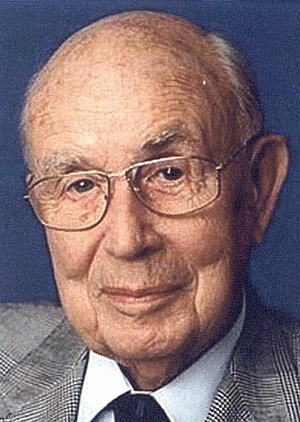1936
Sennheiser – a name that stands as a synonym for high quality headphones and microphones across the globe. The company founder and namesake Fritz Sennheiser had originally planned to study landscape architecture after leaving school. He finished his thesis at the HHI.
With the dire economic situation of the 1920s, Sennheiser decided to study communications engineering at the Technical University of Berlin – a rational choice that would see him off on a remarkable career. Sennheiser finished his studies at the Heinrich-Hertz-Institut for Oscillation Research in 1936. He remains one of the most prominent alumni of the Heinrich-Hertz-Institut.
At the HHI, he focused his initial research on electronic music. Working with his later thesis supervisor Professor Vierling, he developed the powerful “Großtonorgel”. An electric organ that would become a pioneering milestone for the future technology of electronic musical instruments. The instrument saw its first high profile deployment at the opening of the 1936 Olympic Games in Berlin. The idea was to create a soundscape in the large open-air stadium to rival the acoustics of cathedral churches. To make this possible, the Institute’s staff brought the electric organ to the stadium and repurposed a traditional grand piano as a reverb apparatus. The organ had another public appearance at the same year’s Berlin radio exhibition. By then, the Institute’s professionals had improved the sound again: The organ now captivated audiences with its electronic bell sounds.
In 1938, Sennheiser left the HHI to take up a post as lecturer in Hannover, where he also founded his company after the war. He never lost touch with his previous employer: His private office was decorated by a picture of the Institute that he never ceased to call the “Mecca of Telecommunications”.
